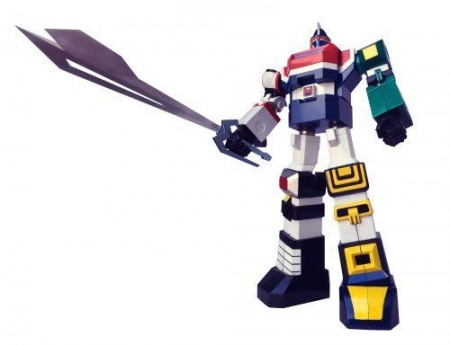Ask John: Does Buying Ancillary Merchandise Actually Support Old Shows?

Question:
Like a lot of fans in the digital age, I find myself buying a lot less anime than I did in the 90’s and early 00’s. Fansubs or officially sanctioned online streaming is just so convenient. However, being a fan of robot toys, I often buy merchandise based on many of the works I enjoy. My question is, does buying merchandise based on an anime franchise still support it, even if said franchise is no longer being animated and released?
Answer:
Whether or not purchasing sanctioned ancillary merchandise actually “supports” a specific anime title depends partially on how one decides to define “supports.” In select cases, such as Bandai-owned Sunrise Studio producing Gundam anime and Bandai producing Gundam model kits and mecha toys, revenue generated from toy sales goes back to the parent company that originally paid for the production of the anime. However, in most cases anime production studios work on a contractual basis. Most anime studios are independent businesses that produce anime on a work-for-hire basis. After production committees write a check to the anime production studio, the studio uses that money to pay animators and produce animation. After the animation work is complete, the animation studio seeks new contracts to produce new shows. The studio received its payment for the animation work and doesn’t receive residual royalty payments.
With a realistic example such as Mazinger Z toys, no new Mazinger Z anime has been produced in decades, but new Mazinger Z toys continue to be produced and released. For each Mazinger Z toy that a private collector purchases, the toy manufacturer, Bandai, for example, earns income, and Mazinger Z creator Go Nagai receives a small royalty payment. In such a case, with an anime title based on a single creator’s work, the creator does receive income from the sale of supplemental merchandise, even many years after the anime broadcast; however, the original animation studio that produced the original anime does not receive any residual royalties. If anime toys and merchandise based on a particular title or franchise consistently sell well, one can imagine that producers would naturally be more inclined to revive that particular franchise with new anime.
The poor plight of rank & file animators and small, independent animation production houses has been a global public concern for years because the nature of the anime industry treats animators as disposable low-wage contract labor. Cynics can and do argue that purchasing any sort of anime merchandise is fruitless because none of the revenue from the sale price of ancillary merchandise ever goes into the pockets of the individuals that actually drew and painted the anime. But the entire anime industry is insular and cyclical. When collectors and fans purchase home video and ancillary goods, their money goes to the creators that invent anime and manga concepts, and goes to the producers and companies that employ anime production studios. If sales of supplemental anime merchandise were to suddenly cease, producers would suddenly see a reduction in income and would subsequently have less reason to continue paying production houses and animators to produce new anime. Granted, buying Evolution Toys’ new God Mars action figure likely isn’t going to generate any new revenue for the TMS anime studio that animated the Rokushin Gattai God Mars television series back in 1981, but the mere action of actually buying new anime merchandise keeps business eager to continue producing new anime merchandise and necessitates the continued development of new anime.
Add a Comment
You must be logged in to post a comment.


‘new Mazinger Z anime has been produced in decades,’
What are you talking about? They rebooted the series in 2009. [Sort of.] http://en.wikipedia.org/wiki/Shin_Mazinger_Shougeki!_Z_Hen
I think there are also (rare) instances where the animation studio also controls the IP, like with Kyoto Animation post-Hyouka and also studio Ghibli, but I could be wrong. My knowledge of anime business structures are vague at best. Most of the time, animation studios are just contractors, and the animation staff usually involve many freelancers. The anime productions themselves are often part of a very fancy marketing campaign for the source material and merchandise.
In that context, success or failure can be nebulous. If you buy merchandise, it increases the odds of more of that merchandise being made and not necessarily more _anime_ being made. Sometimes the continuation of anime is dependent on the continuation of the source material. One striking example is Suzumiya Haruhi, which one would expect to have gone on forever in anime form… But the novel author slacked for years and Kadokawa found itself without any new light novels to promote with anime. Instead, Kadokawa is promoting a spin-off manga, “The Disappearance of Nagato Yuki-chan”, with an upcoming spin-off anime.
The chart linked below is far more vague than I would like, but it compares what consumers spend on “anime” with what “anime companies” receive in revenue. — https://plus.google.com/+SeanBires/posts/WhuvAS34FTv
Sorry. Forgot about Shin Mazinger. And indeed some studios and some franchises are exceptions.